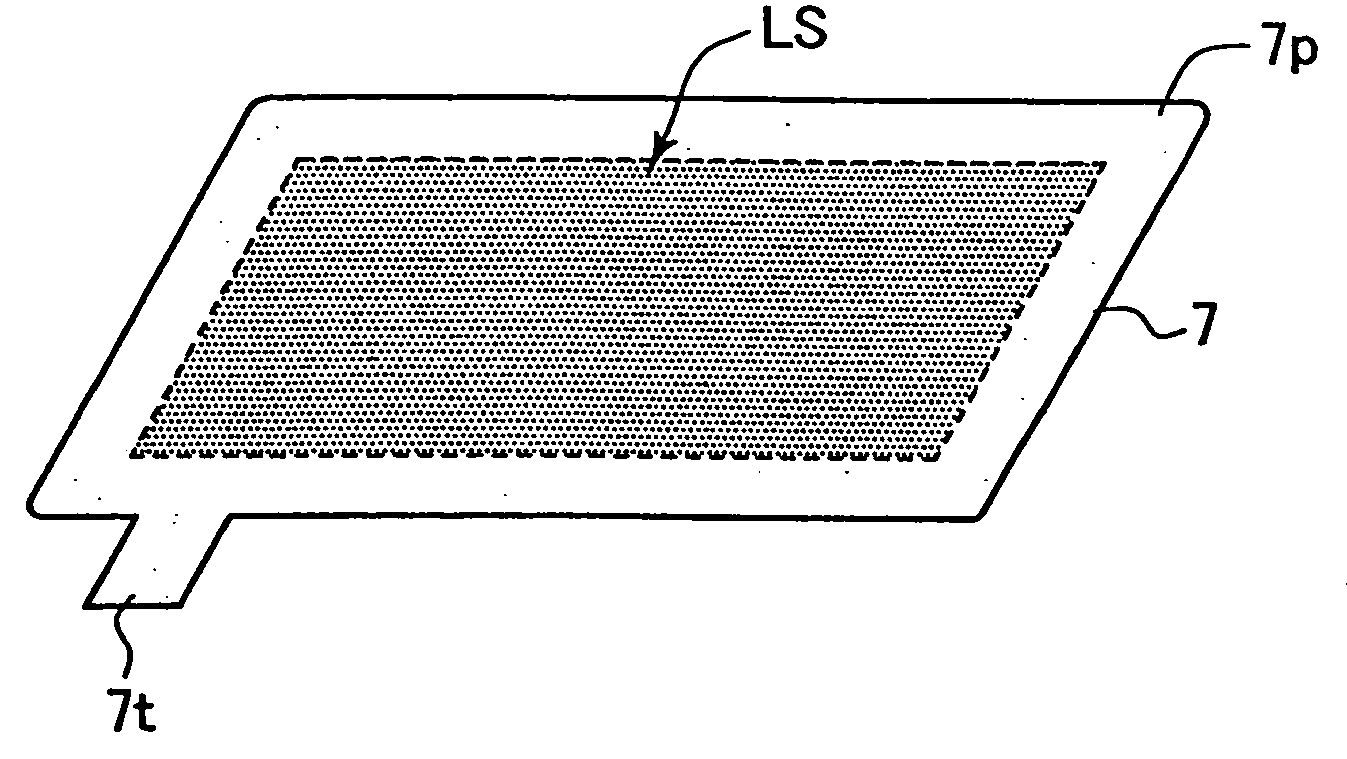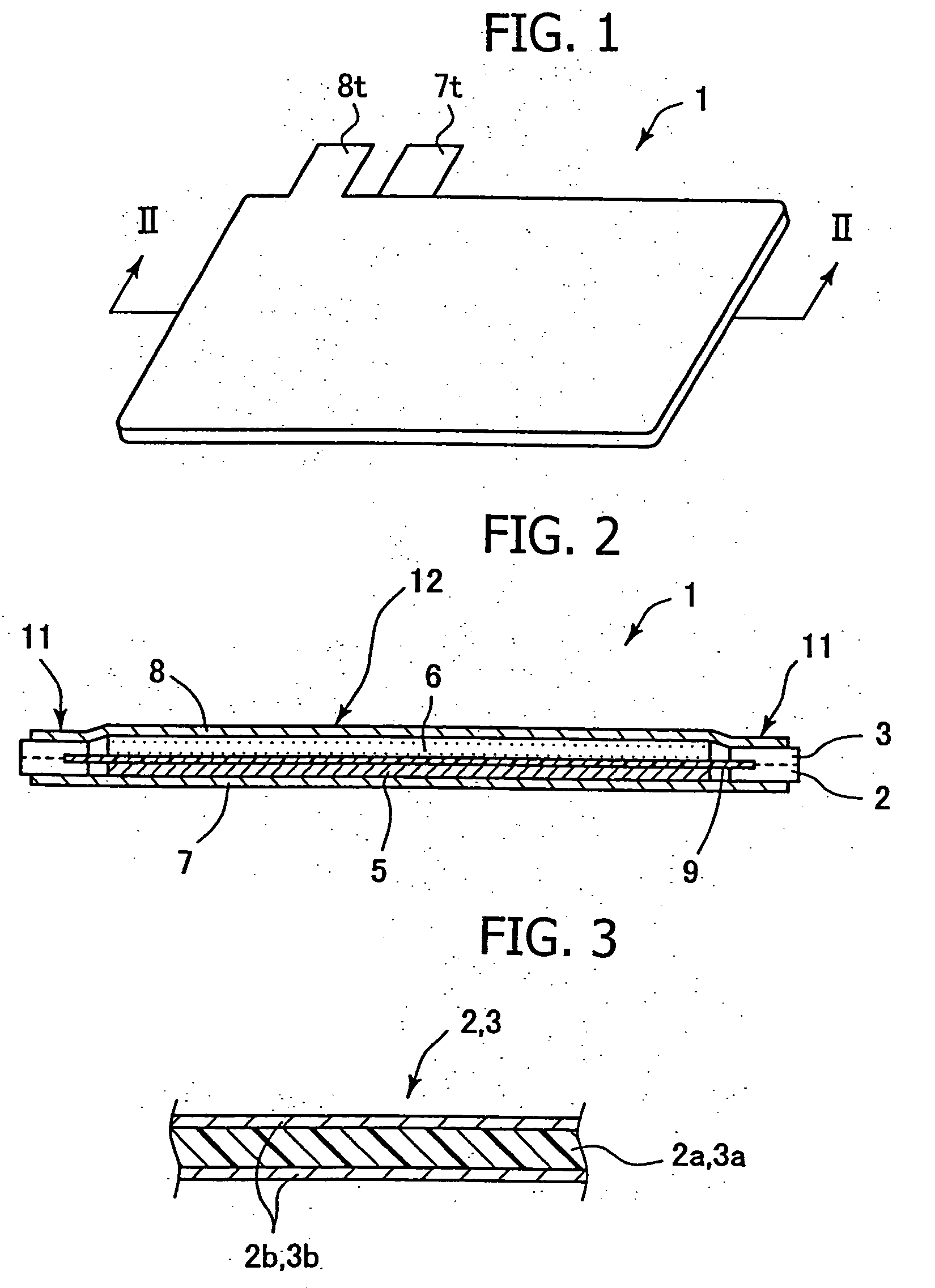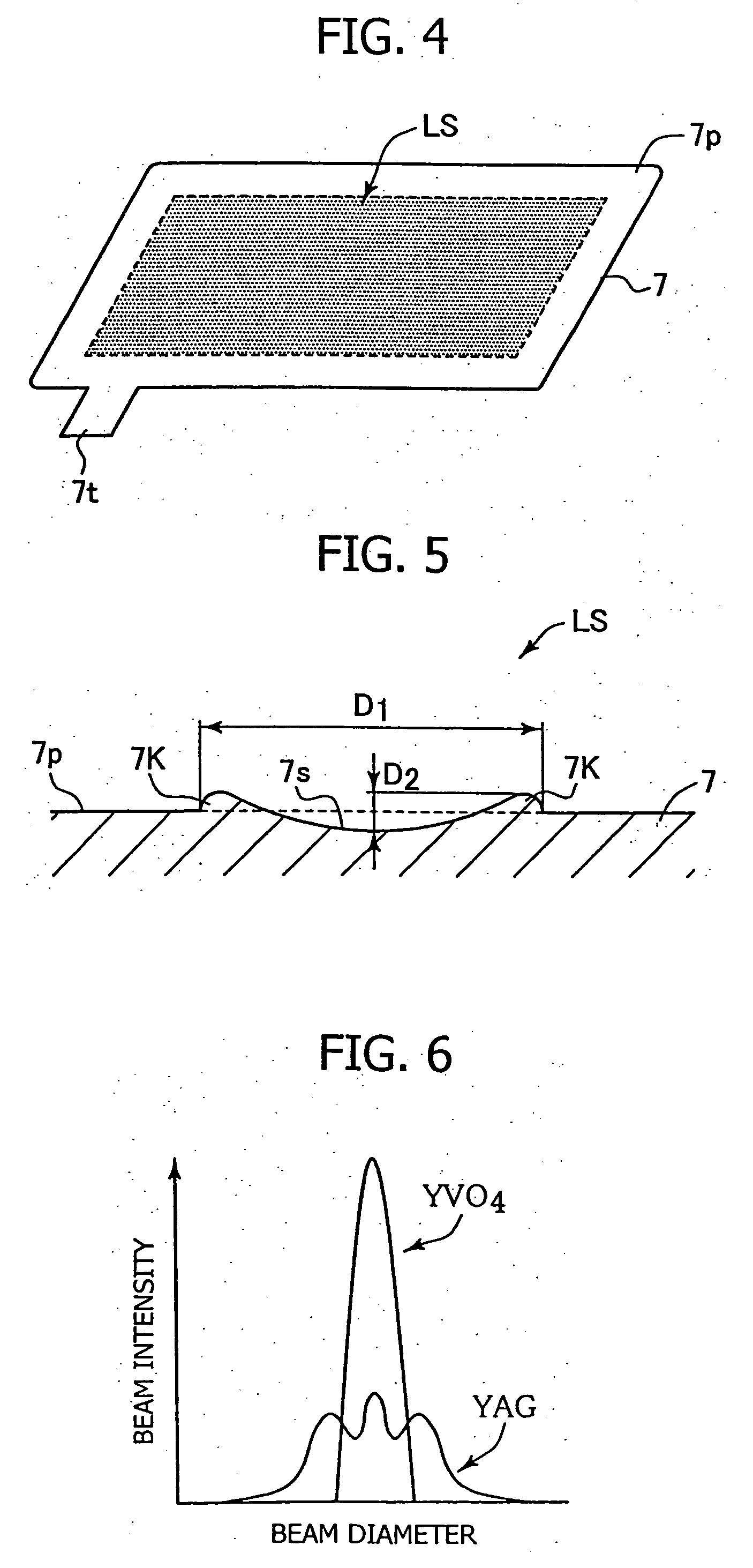Lithium cell and method for manufacturing the same
a technology of lithium cells and lithium batteries, applied in the field of lithium cells, can solve the problems of deformation or breakage of thin lithium foils, inability to reliably maintain adherent contact for a long time, and the lithium foil and the metallic current collection plate do not readily adhere to each other, etc., to achieve stable adherence, enhance the effect of adhesion contact, and good adhesion conta
- Summary
- Abstract
- Description
- Claims
- Application Information
AI Technical Summary
Benefits of technology
Problems solved by technology
Method used
Image
Examples
examples
[0042] In order to confirm the effect of the present invention, the following experiments were conducted. First, a stainless steel plate (SUS304) having a thickness of 30 μm was prepared as an anodic current-collecting plate. The surface roughness of the stainless steel plate was measured. Subsequently, the surface of the stainless steel plate was roughened by use of a YVO4 laser marker (MD-V9600, product of Keyence Corp.) under the following conditions: printing speed 4,000 mm / sec; frequency 20 KHz; laser output 3W. The roughened surface was measured for roughness. FIGS. 9A and 9B shows measured surface roughness profiles.
[0043]FIG. 9A shows the surface roughness profile of the surface-roughened stainless steel plate as measured in a diametral direction of a laser-machined spot. The horizontal axis represents length in a planar direction, and the vertical axis represents length in the direction of thickness. From the profile of FIG. 9A, arithmetical mean roughness Ra=0.192 μm, and...
PUM
| Property | Measurement | Unit |
|---|---|---|
| diameter | aaaaa | aaaaa |
| height | aaaaa | aaaaa |
| thickness | aaaaa | aaaaa |
Abstract
Description
Claims
Application Information
 Login to View More
Login to View More - R&D
- Intellectual Property
- Life Sciences
- Materials
- Tech Scout
- Unparalleled Data Quality
- Higher Quality Content
- 60% Fewer Hallucinations
Browse by: Latest US Patents, China's latest patents, Technical Efficacy Thesaurus, Application Domain, Technology Topic, Popular Technical Reports.
© 2025 PatSnap. All rights reserved.Legal|Privacy policy|Modern Slavery Act Transparency Statement|Sitemap|About US| Contact US: help@patsnap.com



